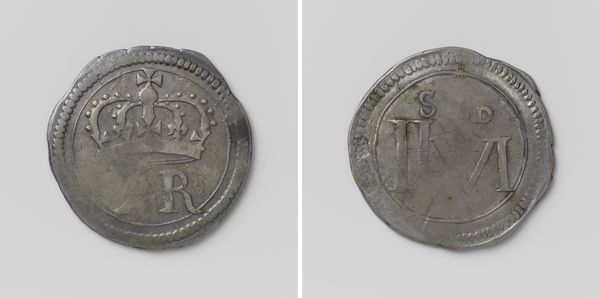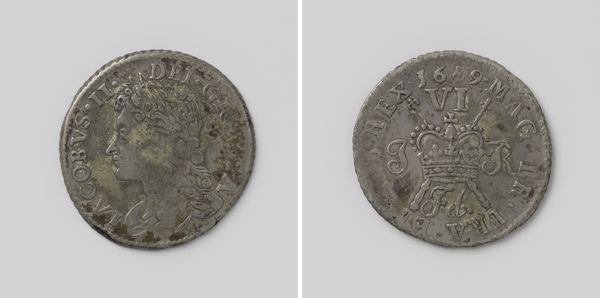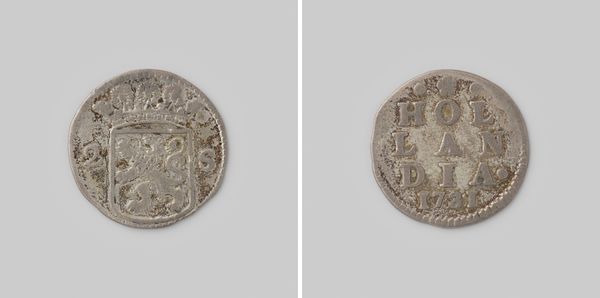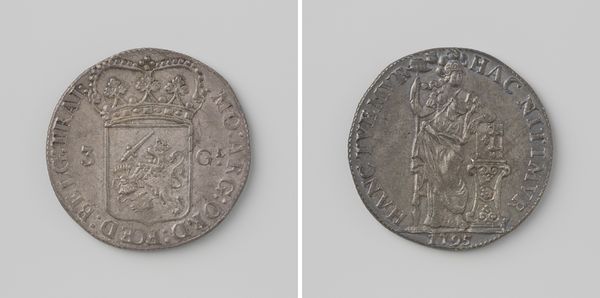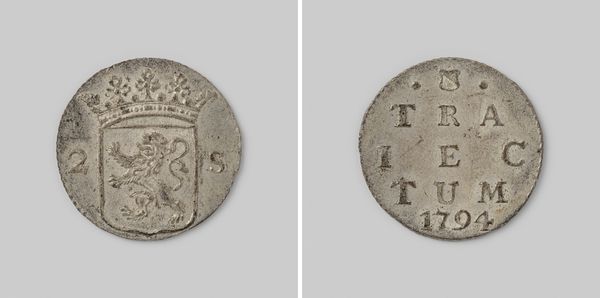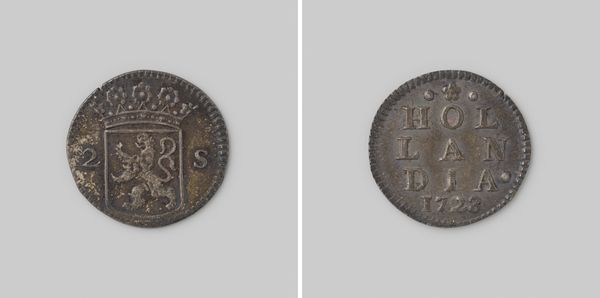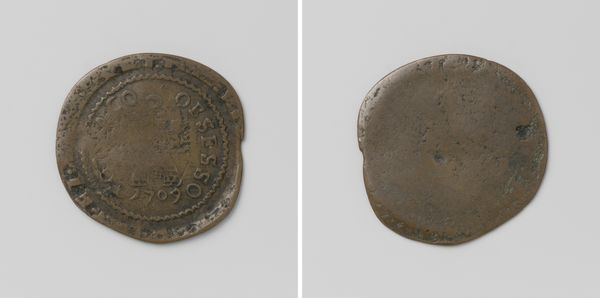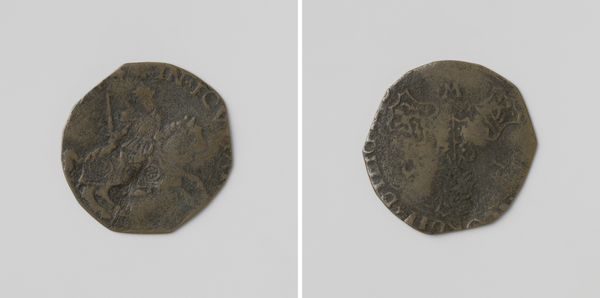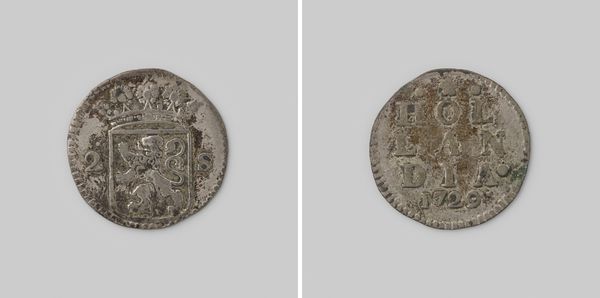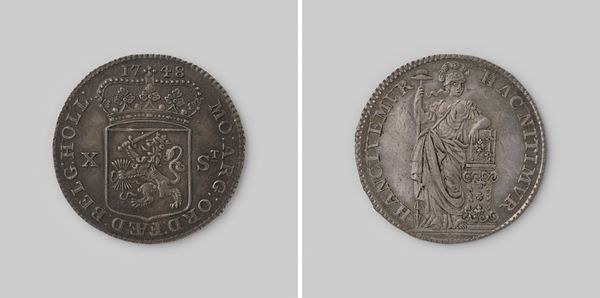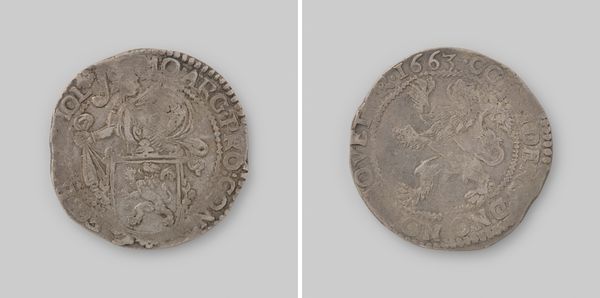
Shilling; twaalf pence, noodmunt van Karel I, koning van Engeland te Ormond geslagen van het door de ingezetenen opgebrachte zilver 1643
0:00
0:00
print, metal, relief, sculpture
#
portrait
#
medieval
# print
#
metal
#
sculpture
#
relief
#
sculpture
Dimensions: diameter 2.8 cm, weight 5.71 gr
Copyright: Rijks Museum: Open Domain
Curator: Before us, we have a shilling—a twelve-pence piece—emergency coinage from the reign of Charles I, King of England. Struck in Ormond in 1643 using silver provided by local inhabitants, its creation speaks to the turbulent times. Editor: My initial impression is of something worn, weathered—almost desperate. The edges are rough, the design seems simple, not particularly refined. It tells a story of necessity. Curator: Indeed. Coins, throughout history, serve as potent symbols of power and legitimacy. However, in times of crisis, their form and function can dramatically shift. This shilling is no exception. Minted during the English Civil War, its very existence underscores the fractured nature of sovereignty at that time. Consider who controlled the means of production. Who could issue such an object? And how that affected gendered or racialized bodies. Editor: Visually, the crown and royal initials, "C R," signal that legitimacy, that link to tradition, but the roughly-hewn form, and the obvious wear from circulation, almost undermines that message. What survives is a faint memory. I imagine someone clutching this coin, a tangible link to a crumbling order. Was it enough to sustain hope? Or did it become just another symbol of impending doom? Curator: The other side displaying “XII” or twelve pence reflects the material realities of war and resistance. Royalist strongholds needed to pay soldiers and suppliers—the act of collecting silver from citizens demonstrates an intersection between loyalty and socio-economic obligation. This illustrates not just political allegiance, but how people literally invested in their ideology through the use of their resources. Editor: It’s fascinating how such a small object can carry such weight. We are seeing here both a monetary unit, but also something beyond it - an item charged with meaning. As an icon, its images still speaks to defiance, a challenge to established power. That feeling persists despite the years. Curator: Absolutely. And that is why analyzing art, no matter how functional it seems, brings an invaluable layer of understanding when we explore identity, political struggle, and human resilience. Editor: It’s amazing what visual languages persist and how potent material objects continue to connect us to pivotal moments in human history.
Comments
No comments
Be the first to comment and join the conversation on the ultimate creative platform.
